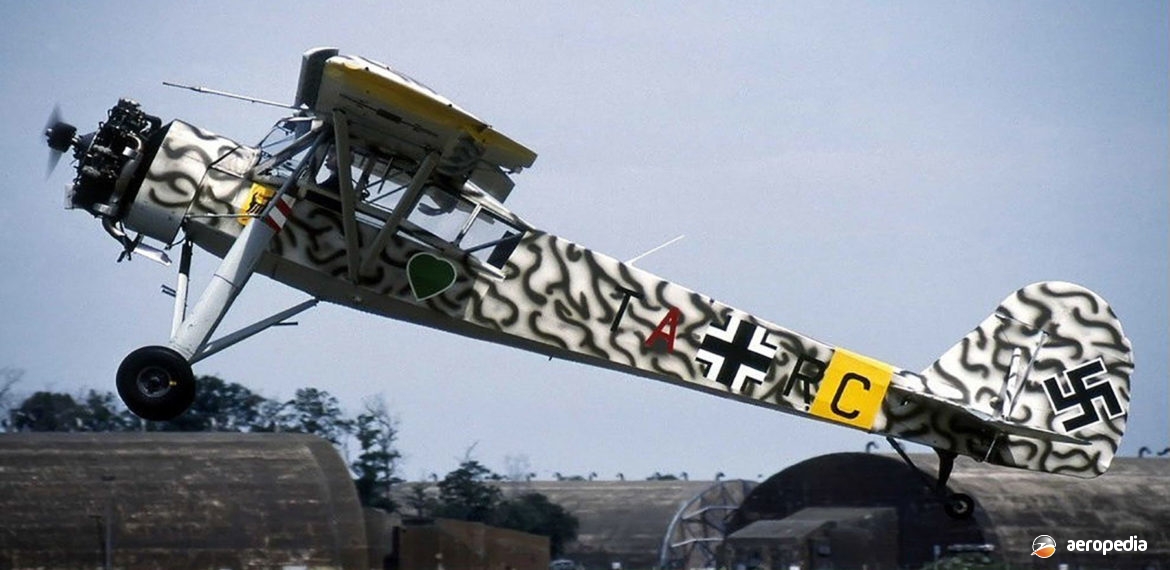Photograph:
Morane Saulnier MS.505 Criquet G-BPHZ (c/n 1827) in the United Kingdom (S Lewis)
Country of origin:
France
Description:
STOL observation and communications aircraft
Power Plant:
One 172 kw (230 hp) Salmson 9 AB nine cylinder air-cooled radial engine
Specifications:
- Wingspan: 14.29 m (46 ft 9 in)
- Length: 9.69 m (31 ft 8 in)
- Height: 3.1 m (10 ft 2 in)
- Wing area: 25.98 m² (279.7 sq ft)
- Max speed at sea level: 171 km/h (106 mph)
- Normal cruising speed: 137 km/h (85 mph)
- Climb to 1,000 m (3,280 ft): 5.5 mins
- Service ceiling: 4,298 m (14,100 ft)
- Range at 116 km/h (72 mph): 700 km (435 miles)
- Empty weight: 953 kg (2,100 lb)
- Loaded weight: 1,424 kg (3,140 lb)
History:
During World War II, to permit German construction plants to be used for the production of fighters and bombers, the German RLM decided to transfer production of lesser important aircraft to other countries, the types involved including the Fieseler Storch. Some 925 examples of the Fieseler Fi 156 Storch were built at Morane Saulnier’s Puteaux plant. French production included a number of models, the differences mostly relating to the engine installed. The MS.500 was fitted with the Argus As 10C eight-cylinder inverted VEE engine; the MS.501 with the six-cylinder in-line Renault 6Q engine; and the MS.502 with the Salmson 9AB, the latter being the only French built variant with a radial engine.
Production continued for a short time after the war for the French Air Force. After retirement a number saw service with aero clubs, and others were used for glider towing duties. In 1964, to increase power and reliability for the latter purpose, a number were fitted with the 224 kw (300 hp) Jacobs R-915A seven-cylinder radial engine, these becoming known as the MS.505.
One example of the series has been imported to Australia. Originally built at the Gerhard Fieseler Werke GmbH plant at Kassel-Bettenhausen late in World War II, this machine had originally been fitted with an Argus As 10C inverted V-8 engine. However, this was one of 40 examples retrofitted after the war by Morane Saulnier with the Jacobs R-755-A2 radial engine, being re-designated MS.505 Criquet (Locust). A number of derivatives of the design were built, including the 501, 502, 504, 505 and 506, the variant number determining the engine fitted to the airframe.
After military service the Australian example (Werk No 120-40) became F-BJQD and was used for sometime for parachute operations. It eventually joined the Jean Baptiste Salin collection at de Cerny Aerodrome near the French town of La Ferte-Alais. It was imported to Australia in 1995 for restoration and ownership was transferred to an owner in Queensland in 2003, to be based at Caboolture but restored to airworthiness by Aerotec Queensland at their facility at Toowoomba.

